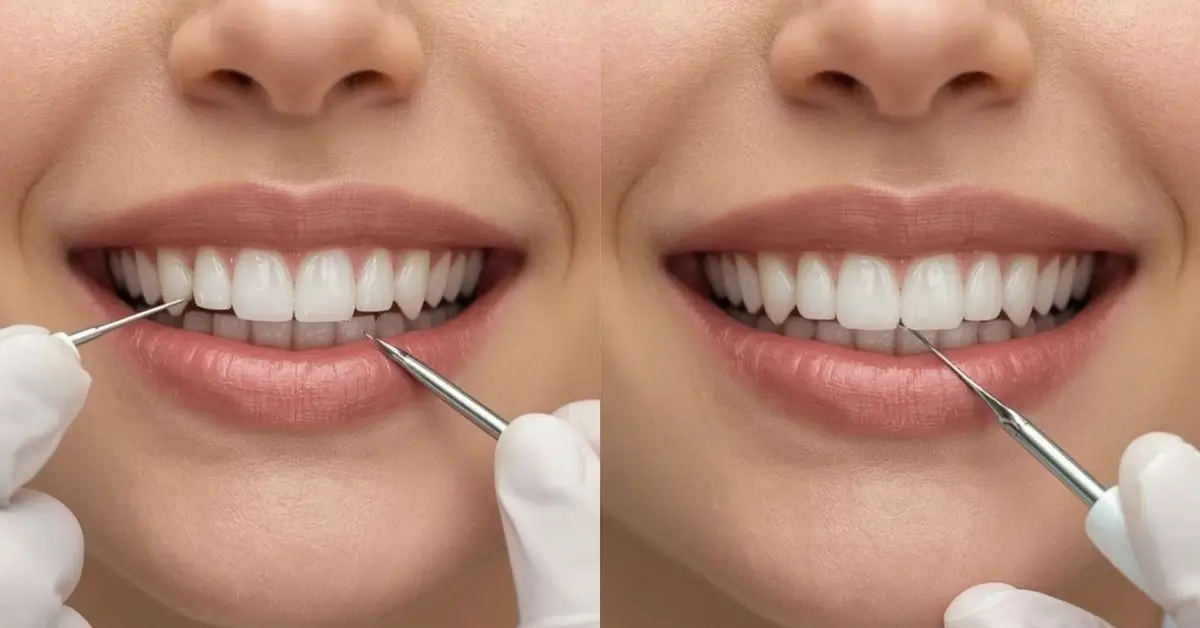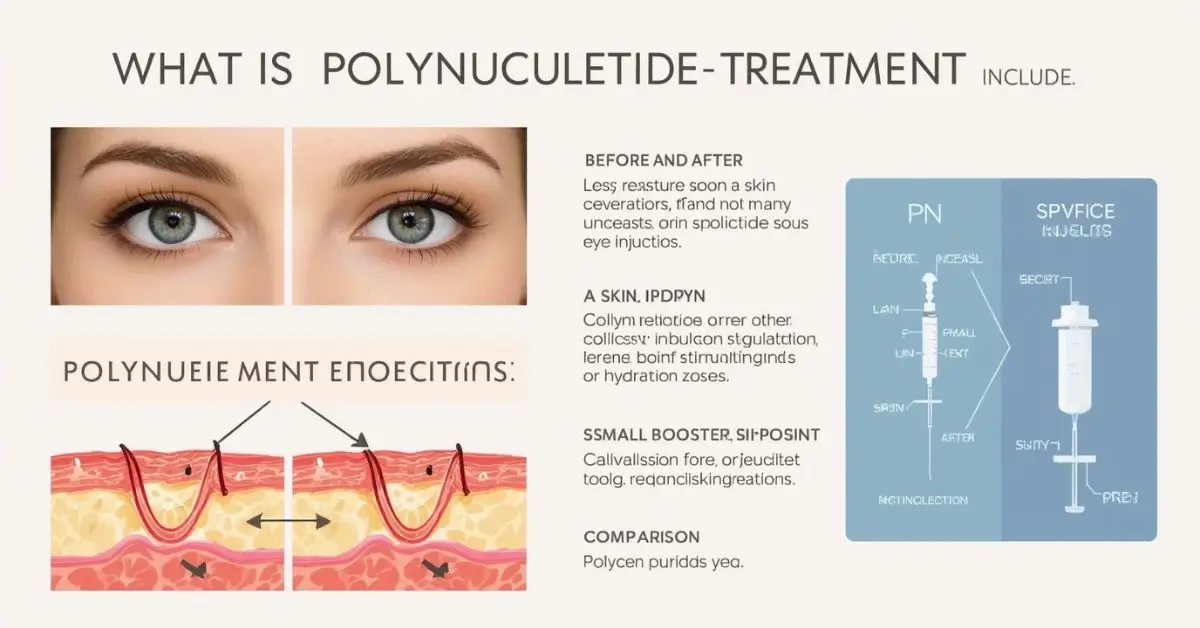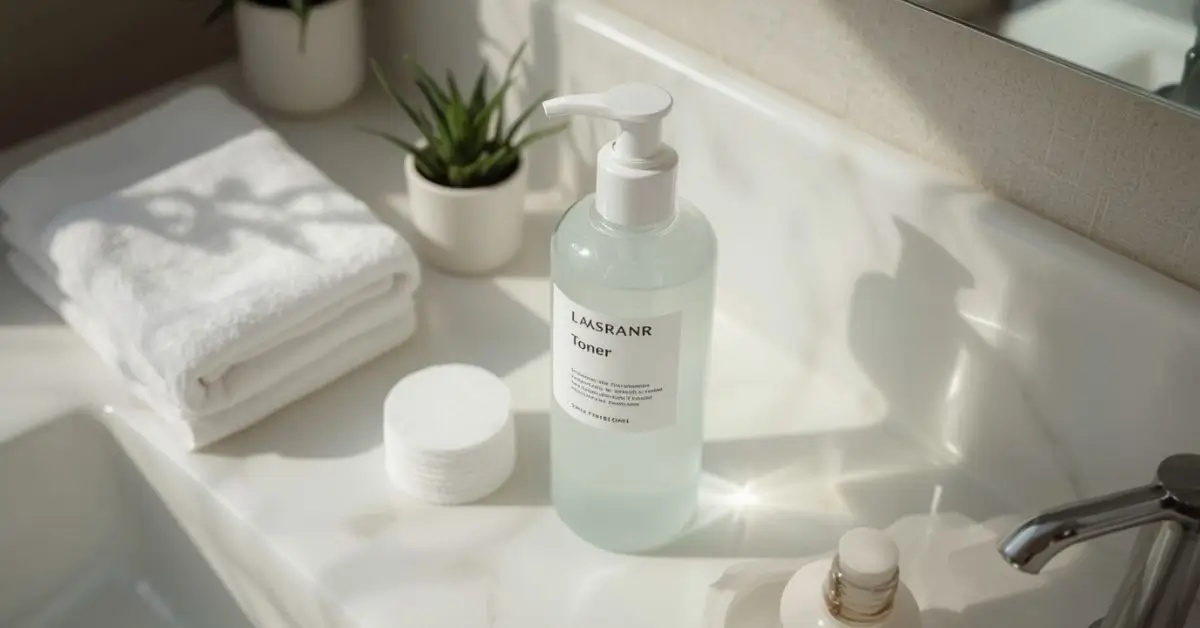HEALTH
What Are Composite Veneers and How Do They Improve Smiles?

If you’ve ever looked in the mirror and felt self-conscious about chipped, stained, or uneven teeth, you’re not alone. Many adults and young professionals want a brighter smile but feel uncertain about the options or costs involved. That’s why people often ask: what are composite veneers?
This treatment has become one of the most popular cosmetic dentistry options, especially for those who want a quick, non-invasive, and cost-effective solution compared to porcelain veneers. In this guide, we’ll explain exactly what composite veneers are, how they work, their pros and cons, and whether they’re right for you.
What Are Composite Veneers and How Do They Work?
Composite veneers are thin layers of tooth-colored resin applied to the front surface of your teeth. The material is carefully sculpted and bonded directly to the enamel, improving the shape, size, and color of your teeth.
Unlike porcelain veneers, which are made in a lab and require more tooth preparation, composite veneers are usually done in a single appointment. This makes them a popular choice for a smile makeover with veneers that is faster and less invasive.
Key Benefits of Composite Veneers
- Affordable compared to porcelain veneers
- Non-invasive dental veneers – often no drilling or enamel removal required
- Same-day results – most procedures are completed in one visit
- Reversible in many cases
- Customizable to match natural tooth shade
Who Is a Good Candidate for Composite Veneers?
You may be an ideal candidate if you:
- Have chipped or cracked teeth
- Want to cover discoloration or stains
- Need to close small gaps
- Have slightly misaligned teeth but don’t want braces
- Are seeking a composite resin teeth treatment that looks natural
Health-conscious readers should note: your gums and teeth must be in good condition before starting any veneer treatment.
Porcelain Veneers vs Composite Veneers
Many people compare porcelain veneers vs composite veneers when choosing cosmetic dentistry.
| Feature | Composite Veneers | Porcelain Veneers |
|---|---|---|
| Cost | Lower (£250–£400 per tooth UK / $250–$1,500 US) | Higher (£600–£1,200 per tooth UK / $900–$2,500 US) |
| Procedure | Same-day, applied directly | Lab-made, requires 2–3 visits |
| Durability | 5–7 years (average lifespan of composite veneers) | 10–15 years |
| Aesthetics | Natural look, slightly less stain-resistant | Superior translucency and stain resistance |
| Reversibility | Often reversible | Permanent, involves enamel removal |
The Dental Veneers Procedure Step by Step
- Consultation: Dentist examines your teeth and discusses goals.
- Shade Matching: Composite resin color is chosen to blend naturally.
- Application: Thin layers of resin are applied and shaped.
- Curing: UV light hardens the material.
- Polishing: The surface is smoothed for a natural shine.
Patients often ask, “What to expect during a composite veneers procedure?” – The process is quick, usually pain-free, and doesn’t require anesthesia.
Pros and Cons of Composite Veneers
Advantages
- Affordable cosmetic dentistry option
- Quick and minimally invasive
- Easy repairs if damaged
- Customizable for natural results
Disadvantages
- Shorter lifespan compared to porcelain
- Can stain over time (coffee, tea, smoking)
- Less durable under pressure (may chip if you grind teeth)
Cost of Composite Veneers
Patients often ask: “How much do composite veneers cost in the UK/US?”
- UK: £250–£400 per tooth
- US: $250–$1,500 per tooth
Prices depend on the dentist’s expertise, clinic location, and complexity of treatment.
Do Composite Veneers Look Natural?
Yes. When done by an experienced cosmetic dentist, composite veneers blend seamlessly with your natural teeth. However, because porcelain is more translucent, it usually offers the most lifelike appearance.
Longevity: How Long Do Composite Veneers Last?
On average, the lifespan of composite veneers is 5 to 7 years with proper care. Good oral hygiene, regular dental check-ups, and avoiding habits like nail-biting or chewing ice can extend their durability.
Best Care Tips for Composite Veneers
- Brush twice daily with fluoride toothpaste
- Avoid excessive staining foods/drinks (coffee, red wine)
- Wear a mouthguard if you grind your teeth
- Visit your dentist for routine polishing
Expert Sources
- British Dental Association – Information on cosmetic dentistry standards
- American Dental Association – Guidelines on veneers and bonding treatments
- Colgate Oral Care Center – Veneers procedure and aftercare insights
FAQ’s
Are composite veneers worth it?
Yes, if you want a cost-effective, quick, and minimally invasive way to enhance your smile.
Can composite veneers fix crooked teeth?
They can improve minor misalignments, but they don’t replace orthodontics for severe cases.
Are composite veneers permanent or removable?
They are semi-permanent and often reversible, unlike porcelain veneers.
Do composite veneers damage your teeth?
When applied by a skilled dentist, they cause minimal or no damage to natural enamel.
Composite veneers vs crowns: which is better?
Crowns are stronger and cover the whole tooth, but veneers are less invasive and mainly for cosmetic improvements.
Who is a good candidate for composite veneers?
Anyone with healthy teeth and gums who wants to fix chips, gaps, discoloration, or mild misalignment.
Conclusion
Now you know what are composite veneers, how they work, and whether they might be the right option for you. They provide a balance between affordability, aesthetics, and convenience—making them one of the most popular cosmetic dentistry options in 2025. If you’re considering them, consult a trusted dentist to ensure they suit your needs and long-term goals.
HEALTH
What Is Polynucleotide Treatment and How Does It Work?

If you’ve been researching advanced skin rejuvenation options, you’ve likely come across the term polynucleotide treatment. With so many choices in regenerative aesthetics—PRP, fillers, exosomes, and injectable skin boosters—it can be overwhelming to decide what truly works. Patients often want safe, non-surgical solutions that deliver visible improvements in skin quality, reduce signs of aging, and stimulate natural repair.
This guide explains what is polynucleotide treatment, how it works, its benefits, costs, and whether it’s the right option for you. Whether you’re an individual exploring anti-aging injectables, a beauty-conscious millennial seeking preventive care, or a medical aesthetics professional comparing treatments, this article provides everything you need to know.
What Is Polynucleotide Treatment for Skin?
Polynucleotide treatment is a DNA-based skin treatment that uses highly purified polynucleotides—natural DNA fragments derived from salmon or trout—to stimulate the skin’s ability to repair and regenerate.
Unlike traditional fillers, which simply add volume, polynucleotide skin treatment works at a cellular level to:
- Boost collagen and elastin production
- Improve hydration and elasticity
- Reduce fine lines and wrinkles
- Repair damaged tissue
- Support long-term skin health
This makes it part of the next generation of aesthetic rejuvenation treatments focused on natural, gradual improvement rather than instant artificial volume.
How Do Polynucleotide Injections Work?
Polynucleotides act as bio-stimulators. Once injected into the skin, they:
- Promote tissue regeneration therapy by encouraging fibroblast activity.
- Increase hydration by binding water molecules, improving skin plumpness.
- Trigger collagen stimulation therapy, helping reduce sagging and wrinkles.
- Reduce oxidative stress, protecting skin from aging and environmental damage.
Because they work with your body’s natural repair processes, the results look subtle, fresh, and long-lasting.
Key Benefits of Polynucleotide Treatment for Anti-Aging
Patients and professionals highlight several advantages of choosing polynucleotide therapy:
- Natural results: Unlike fillers, there’s no “overdone” look.
- Safe for sensitive areas: Especially effective for delicate zones like polynucleotides for under eyes.
- Improves skin quality: Not just appearance, but actual tissue health.
- Versatile use: Can be applied to face, neck, décolletage, and even hands.
- Long-term rejuvenation: Effects build over weeks as collagen regenerates.
Polynucleotide vs PRP: Which Is Better?
Both polynucleotides and platelet-rich plasma (PRP) are regenerative aesthetics treatments, but they differ in source and results.
| Feature | Polynucleotide Treatment | PRP Therapy |
|---|---|---|
| Source | Purified fish DNA | Patient’s own blood plasma |
| Action | Collagen stimulation + tissue repair | Growth factors for healing |
| Best for | Anti-aging injectables, under-eye, hydration | Wound healing, hair restoration |
| Consistency | Standardized quality | Results vary by patient |
Many clinics recommend polynucleotides for skin rejuvenation, while PRP may be better for scalp treatments or post-injury healing.
Is Polynucleotide Treatment Safe for All Skin Types?
Yes, in most cases. Because it uses natural, highly purified DNA, skin repair injectables with polynucleotides have an excellent safety record. Common, mild side effects include:
- Temporary redness or swelling at the injection site
- Minor bruising
- Slight tenderness
Severe reactions are rare when the treatment is performed by trained professionals in regulated clinics.
Cost of Polynucleotide Skin Treatment
Pricing varies depending on region, clinic expertise, and number of sessions.
- UK: £250 – £500 per session
- US: $400 – $800 per session
Most patients need 2–3 sessions spaced a few weeks apart, with maintenance treatments recommended annually. Always consult clinics directly for package pricing and best clinics for polynucleotide injections near me searches.
How Long Does Polynucleotide Treatment Last?
Results typically appear gradually over 4–6 weeks, with improvements lasting 6–12 months depending on lifestyle, skin condition, and aftercare. Maintenance sessions extend the benefits.
Who Is a Good Candidate for Polynucleotide Injectables?
You may benefit if you are:
- Experiencing early signs of aging (fine lines, dullness)
- Concerned about under-eye hollows or sagging
- Seeking subtle, natural rejuvenation without fillers
- A patient who values aesthetic rejuvenation treatments with long-term benefits
Not suitable for:
- Pregnant or breastfeeding individuals
- Patients with severe allergies to fish-derived products
- Anyone with active skin infections in the treatment area
Expert Opinions on Polynucleotide Therapy
- According to the British College of Aesthetic Medicine (BCAM), bio-stimulatory injectables like plynucleotides are “a promising frontier in regenerative aesthetics” (Source: BCAM Clinical Guidance 2024).
- The Journal of Cosmetic Dermatology (2023) reported that polynucleotide injections improved skin elasticity and hydration by over 30% after three sessions.
- Dermatologist Dr. Mary Sommerlad (Harley Street, London) highlights polynucleotides as “a safe, effective alternative for patients who want rejuvenation without volumizing fillers.”
FAQs
What is polynucleotide treatment for skin?
A regenerative injectable that uses purified DNA fragments to repair skin, boost collagen, and improve hydration.
How do polynucleotide injections work?
They stimulate fibroblasts, increase collagen, and improve tissue regeneration, leading to healthier, firmer skin.
Can polynucleotide treatment help under eye wrinkles?
Yes. It is one of the most popular uses because it addresses fine lines and dark circles naturally.
What are the side effects of polynucleotide therapy?
Mostly mild—redness, swelling, or bruising. These resolve within days.
Polynucleotide vs PRP: which is better?
Polynucleotides are standardized and consistent, while PRP depends on individual blood quality. Both are effective but used for slightly different purposes.
How long does polynucleotide treatment last?
Results last between 6–12 months, with maintenance sessions recommended for lasting effects.
Conclusion
Polynucleotide treatment is more than just another skin booster—it’s a science-backed, regenerative approach that enhances skin health from within. By stimulating collagen, improving hydration, and repairing tissue at a cellular level, it offers natural, long-lasting results for those seeking subtle rejuvenation. Whether you’re comparing options like PRP or fillers, or simply exploring safe anti-aging injectables, polynucleotides provide an effective solution tailored to modern skincare needs.
HEALTH
What Is a Toner? Tips for Healthy, Balanced Skin

If you’ve ever wondered what is a toner or whether it’s necessary for your skincare routine, you’re not alone. Many skincare enthusiasts, young adults starting their beauty journey, and even men exploring grooming products often skip toner or misunderstand its benefits.
Toners aren’t just optional—they can help balance your skin, refine pores, and prepare your face for moisturizers or serums. In this guide, we’ll cover everything from the basics of toners to advanced tips for specific skin types, so you can make informed choices and optimize your skincare routine.
What Is a Toner and Why Should You Use It?
A toner is a liquid skincare product applied after cleansing and before moisturizing. Its purpose is to:
- Remove residual dirt, oil, and makeup.
- Restore the skin’s natural pH balance.
- Prep skin for serums and moisturizers, improving absorption.
Expert insight: According to the American Academy of Dermatology (AAD), toners can be particularly helpful for people with oily or combination skin to reduce excess sebum and maintain balance.
Toner Benefits for Different Skin Types
| Skin Type | Recommended Toner Type | Key Benefits |
|---|---|---|
| Oily / Acne-prone | Pore-refining toner, witch hazel toner | Controls oil, reduces shine, minimizes pores |
| Dry / Sensitive | Hydrating toner, alcohol-free toner | Provides moisture, soothes irritation |
| Normal / Combination | Skin balancing toner, mild hydrating toner | Maintains balance, prevents dryness or oiliness |
| Mature Skin | Toner with antioxidants or hyaluronic acid | Improves elasticity, preps skin for anti-aging products |
Toner vs Serum: Understanding the Difference
Many people ask: toner vs serum, what’s the difference?
- Toner: Lightweight liquid applied after cleansing; balances and preps skin.
- Serum: Concentrated formula applied after toner; targets specific concerns like fine lines, dark spots, or hydration.
Tip: Always apply toner before your serum to ensure better absorption and maximize results.
How to Use a Toner Properly in Your Skincare Routine
- Cleanse: Start with a gentle facial cleanser.
- Apply toner: Use a cotton pad or fingertips to pat toner evenly across your face.
- Target specific concerns: For acne-prone areas, use a pore-refining toner.
- Follow with serum or moisturizer: Lock in hydration and treatment benefits.
Frequency: Most toners can be applied once or twice daily, depending on your skin type.
Best Toners for Specific Skin Concerns
Toner for Oily or Acne-Prone Skin
- Witch hazel-based toners
- Pore-refining toners with salicylic acid
Hydrating Toner for Dry Skin
- Alcohol-free formulas
- Toners enriched with glycerin, hyaluronic acid, or aloe
Sensitive Skin Toners
- Alcohol-free, fragrance-free formulas
- Skin balancing toners with soothing botanicals
Expert citation: Dermstore recommends choosing toners with alcohol-free, hydrating ingredients to prevent over-drying and irritation.
Are Toners Necessary if You Use Moisturizer and Cleanser?
While not strictly essential, toners enhance your routine by:
- Ensuring all traces of makeup or cleanser are removed.
- Restoring pH balance after washing.
- Preparing skin for serums and moisturizers, increasing efficacy.
Common Ingredients in Toners and Their Benefits
- Witch hazel: Reduces oil and minimizes pores.
- Aloe vera: Calms irritation and hydrates.
- Hyaluronic acid: Boosts hydration.
- Glycerin: Locks in moisture.
- Niacinamide: Helps improve skin texture and tone.
FAQ’s
What is a toner and why should I use it?
A toner removes residual impurities, balances pH, and prepares skin for moisturizers or serums.
Toner benefits for different skin types?
Oily skin: reduces shine; dry/sensitive skin: hydrates and soothes; combination: balances oil and moisture.
How to use a toner properly in a skincare routine?
Apply after cleansing, using a cotton pad or fingertips, then follow with serum or moisturizer.
Toner vs serum: what’s the difference?
Toner balances and preps the skin; serum delivers targeted treatments for hydration, anti-aging, or blemishes.
Best toner for oily or acne-prone skin?
Pore-refining toners with witch hazel or salicylic acid are ideal.
Is alcohol-free toner better for sensitive skin?
Yes, alcohol-free formulas reduce dryness and irritation.
Can toner help minimize pores?
Yes, especially pore-refining and astringent toners with salicylic acid or witch hazel.
How often should you apply toner?
Once or twice daily, depending on skin type and product instructions.
What ingredients should a toner have for hydration?
Hyaluronic acid, glycerin, aloe vera, and botanical extracts help maintain moisture.
Are toners necessary if you use moisturizer and cleanser?
Not strictly, but toners enhance skin balance, remove residue, and prep skin for other products.
Conclusion
Understanding what a toner is and how to use it can transform your skincare routine. From balancing oily skin to providing essential hydration for dry or sensitive skin, toners are a versatile, beneficial step that works for beginners, experts, and skincare enthusiasts alike.
Incorporating a toner suited to your skin type ensures your face is fully prepared for serums and moisturizers, maximizing their benefits while promoting a healthy, radiant complexion.
HEALTH
Anthem Health: Navigating Coverage with Confidence

Anthem Health insurance empowers individuals, families, and businesses across the U.S. with comprehensive coverage, digital tools, and wellness support. As part of the Blue Cross Blue Shield network and under Elevance Health, Anthem combines national reach with local expertise. This article explores plan options, preventive care, seamless claims processing, and the platforms that make Anthem a reliable health coverage partner.
Understanding Anthem’s Plan Types and Networks
ACA Metal Tiers: Bronze, Silver, Gold & Platinum
Anthem offers Affordable Care Act-compliant plans categorized by ACA metal tiers—Bronze, Silver, Gold, and Platinum—so you can balance monthly premiums against out-of-pocket costs Bronze plans have lower premiums but higher deductibles, while Platinum plans are for frequent users seeking minimal copays and coinsurance.

PPO, HMO, EPO — Choosing the Right Network
With PPO (Preferred Provider Organization), HMO (Health Maintenance Organization), and EPO (Exclusive Provider Organization) options, Anthem gives you flexibility. PPO networks allow out-of-network coverage at higher costs, whereas HMOs often require primary care referrals. EPOs offer a middle ground with in-network focus
On‑Exchange vs. Off‑Exchange Plans
You can enroll through the federal marketplace if you qualify for premium subsidies, or directly with Anthem off‑exchange. Licensed agents help determine eligibility and guide you through Special Enrollment Periods and qualifying life events
Coverage Features and Member Benefits
Access to a Broad Provider Network
As part of the Blue Cross Blue Shield Association, Anthem offers access to an extensive network of doctors, hospitals, and specialists nationwide. The BlueCard feature ensures seamless coverage when traveling or relocating
Preventive Care Coverage
All Anthem plans cover annual exams, immunizations, screenings, and wellness checkups at 100% when using in-network providers. This preventive care focus supports early intervention initiatives and long-term health outcomes
Prescription Drug and Pharmacy Benefits
Most Anthem plans include a structured formulary covering generic, brand-name, and specialty medications. Mail-order pharmacy options help save on chronic prescriptions; yet some users report higher copays or tier issues with diabetic supplies under Gold plans
Telehealth and Virtual Care
Through the Sydney Health app and LiveHealth Online partnership, members access telemedicine, nurse advice lines, and mental health care anytime, helping bridge provider access gaps
Wellness Programs and Incentives
Anthem’s Smart Rewards, SilverSneakers gym discounts, nutritional counseling, and stress‑management coaching reward healthy lifestyle choices—many programs integrate with health trackers and deliver wellness credits for gift cards
Behavioral Health Support
With parity for mental health and substance abuse services, Anthem provides coverage for therapy and counseling—an essential component aligned with federal Mental Health Parity laws
Digital Experience and Customer Service
Sydney Health Mobile App
Anthem’s mobile app allows members to view digital ID cards, estimate costs, check claims, refill prescriptions, and locate in-network providers
Claims Processing and Member Support
While Anthem promotes efficient claims handling and transparency tools, some users report delays, misclassified claims, or poor communication with support staff—highlighting a need for proactive follow-up during denials or appeals
Navigating Denials and Pre-Approvals
Anthem requires prior authorization for certain procedures—a common industry practice. Yet clarity on coverage details is vital to avoid unexpected out-of-pocket costs and surprise billing
Security, Data Privacy, and Corporate Identity
Anthem, now operating as Elevance Health, experienced a major data breach in 2015, affecting tens of millions of records. While no medical data was stolen, it triggered industry-wide data security reforms. Since then, Anthem has invested heavily in cybersecurity and credit monitoring for affected members

Common Concerns and Criticisms
- Rising Premiums and High Deductibles: Many policyholders cite steep annual costs, especially under standard Bronze or Silver plans
- Network Narrowing: Some in-network hospitals can become out-of-network, causing coverage interruptions—especially during contract renegotiation .
- Pricing Inconsistencies: Users struggle with variable copays for medication and diagnostic tests; sometimes cash payments are cheaper than insurance-coordinated charges
Tips for Getting the Most from Anthem Coverage
- Review provider network annually to confirm favorite doctors are still in-network.
- Understand your formulary tiers—mail-order can yield savings if correctly used.
- Monitor claims and appeals proactively—use Sydney Health tools and track bills.
- Explore wellness incentives—even small behavior changes earn benefits.
- Request pre‑approvals for major medical procedures to prevent surprise denials.
Frequently Asked Questions
Q1: What is the Sydney Health app used for?
It gives members digital ID cards, cost-estimating tools, claims tracking, prescription refills, and provider searches via a mobile interface
Q2: Are telehealth visits covered by Anthem?
Yes—virtual doctor or therapist visits are covered through Sydney Health and LiveHealth Online, often with low or no copays
Q3: How does Anthem’s Smart Rewards program work?
Members earn points via wellness activities (like annual checkups) that can be redeemed for gift cards—part of Anthem’s preventive focus
Q4: What if my primary doctor is out-of-network unexpectedly?
Anthem typically negotiates new contracts, but if a provider leaves the network, you may have to pay out-of-network rates until open enrollment or contract resolution .
Q5: How do I appeal a denied claim?
Use the Sydney Health portal or customer support to request more information, submit documentation, and file an appeal; tracking via app or phone is essential .
Conclusion
Anthem Health insurance—powered by Elevance Health and the Blue Cross Blue Shield ecosystem—offers a wealth of benefits: flexible ACA tiered plans, broad networks, comprehensive preventive and behavioral coverage, pharmacy benefits, digital tools, and wellness incentives.
-

 TECH5 months ago
TECH5 months agoGlow and Type: Exploring Light-Up Computer Keyboards
-

 BUSINESS5 months ago
BUSINESS5 months agoChoosing the Perfect Salmon Fishing Pole
-

 BUSINESS5 months ago
BUSINESS5 months ago2025 Toyota Fortuner: The Ultimate Blend of Power and Luxury
-

 EDUCATION5 months ago
EDUCATION5 months agoHow Many Teeth Does a Shark Really Have?
-

 FOOD5 months ago
FOOD5 months agoLiquid Gold: The Science and Soul of Cooking Oil
-

 BUSINESS5 months ago
BUSINESS5 months agoBussin’ with the Boys: New Contract, Same Chaos
-

 FOOD5 months ago
FOOD5 months agoYellowtail Unveiled: The Golden Jewel of the Sea
-

 ENTERTAINMENT5 months ago
ENTERTAINMENT5 months agoLububu: The Viral Whirlwind of Digital Affection
